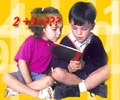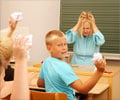Behavioral therapy, including training for parents to help manage their children’s symptoms, is the first line of treatment for children younger than 6 years.

Since the late 1990’s, ADHD diagnosis have risen 5 percent, while diagnoses involving medication have risen by 7 percent since 2007, said Susanna Visser, lead author of the report and an epidemiologist at the CDC’s National Center on Birth Defects and Developmental Disabilities.
Around 8.8 percent children aged between 4-17 are diagnosed for ADHD, while 11 percent of the children in that age range have ever been diagnosed.
The findings are based on data from the largest US survey to date on the diagnosis and treatment of ADHD in children, which included a nationally representative sample of nearly 3,000 children.
Parents were asked questions like what age their child was first diagnosed with ADHD, what type of health care provider made the diagnosis, and what methods or tools were used to evaluate their child.
With guidelines from the American Academy of Pediatrics, behavioral rating scales or checklists were used in the vast majority of evaluations (around 90 percent of the children), while reports from adults outside of the family, such as teachers or child care providers, were included 82 percent of the time.
Advertisement
More than two-thirds (68 percent) of the children received neuropsychological testing, while 30 percent had undergone neurological imaging or laboratory tests.
Advertisement
“Given the challenges involved in diagnosing ADHD in very young children, psychiatrists’ involvement in these cases is good news,” said Visser.
“So many symptoms associated with ADHD — not being able to sit still for long periods, acting as if being driven by a motor, having a tough time attending to tasks — are in fact developmentally appropriate [for kids younger than 6]. If these symptoms seem to pose a problem, you really need a specialist [to conduct an evaluation],” she said.
Behavioral therapy, including training for parents to help manage their children’s symptoms, is the first line of treatment for children younger than 6. Research shows this type of intervention is nearly as effective as medication, Visser added.
Dr. Timothy Wilens, chief of the division of child and adolescent psychiatry at Massachusetts General Hospital and an expert on ADHD, said, “The report suggests there has been significant improvement in diagnosing ADHD in children.”
“The findings indicate thoughtfulness on the part of families and healthcare providers. The majority of physicians are engaging in conversations with parents and gathering information from adults outside of the home. Practitioners are using checklists to better articulate symptoms and the severity of symptoms. Kids are often receiving additional testing to clarify co-occurring disorders or learning problems. Compared with two decades ago, we’re doing much better,” said Wilens.
“Still, the rising rates of ADHD warrant further investigation. The findings about following best practices coupled with the increased rate of diagnosis suggest we should look at why we’re seeing these rates,” said Visser.
Source-Medindia












